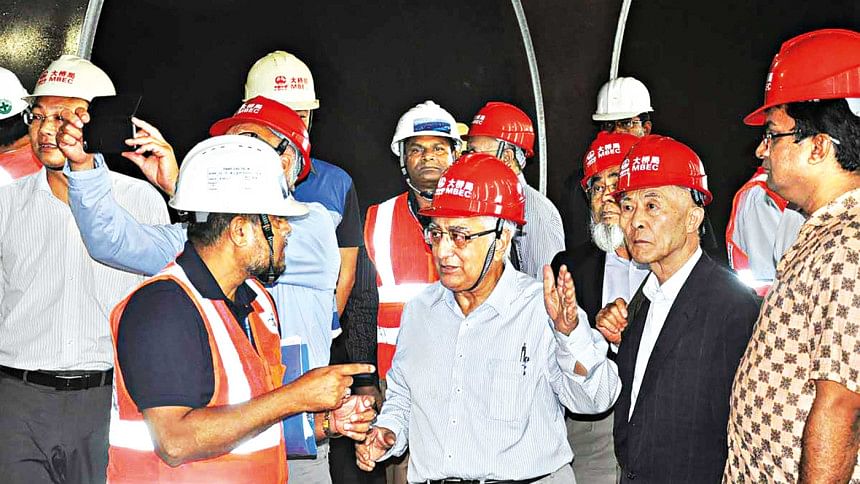“From engineering point of view, Padma Bridge is one of the most challenging projects in the world”

Though the Padma Bridge project was supposed to end in four years, the contractors could not meet the deadline. It is also important to note that from engineering point of view, Padma Bridge is one of the most challenging projects in the world. We had to devise new construction techniques to cope with the unique geographical condition of the river.
River training is another key challenge to implement this project. Approximately USD 1 billion is being invested in river training works on Janjira and Mawa banks to hold the river in its current position.
The riverbed fluctuates a lot due to water flows. The riverbed may scour up to 62 metres or 200 ft. Therefore, we are building the foundation in such a way that it can sustain the load even if the riverbed scours down to 62 metres. We are also taking other disasters into consideration, such as earthquakes, cyclones, accidents like ship impact etc. So, it is crucial to make the foundation strong to carry the entire load of the bridge. We are using "steel piles" as foundation and driving those piles 124 metres deep into the riverbed.
Prof. Jamilur Reza Choudhury (1943- 2020) headed the International Panel of Experts for the Padma Multipurpose Bridge Project. The interview was taken by The Daily Star in July 2019.
The Padma Bridge was designed between 2010 and 2012. It was designed on the basis of soil test conducted during that period. Another round of soil test was carried out by the Contractor during the construction, and it was found that the soil under some piers was of different characteristics. Most of them are silt; some are sand and some are clay. We had to avoid resting the piles on clay as it would slip away under high pressure. It would put the whole structure at risk. Now our options were to either have the tip level above the clay layer or below the clay layer. Since it is nearly impossible to drive the piles below the clay layer, even using the strongest hammer available in the world, we have reduced the length of the piles and increased their numbers. Even after following this method, we figured out that some piers are unable to withstand the load. Hence, we had to resort to another new technology using some chemicals for grouting. Due to such redesigns and adjustments, the completion of this project is being delayed. However, the good news is that we have resolved all the challenges. We expect the bridge to open for vehicle movement by December 2020. Undoubtedly, the construction of Padma Bridge will significantly improve the communication network of the south-western districts which are now heavily dependent on ferry services.
The Padma Bridge Rail Link is another important initiative that will connect Dhaka and Jashore via the Padma Bridge. It will improve the railway connectivity of the south-western region of the country. Most of the funding is from loan from Chinese Government. Under the G2G process, there is no provision for competitive bidding. Therefore, it is difficult to find out the project costs if they are comparable to similar projects. One of my suggestions to the designers was to set up more rail stations in places in Bikrampur like Sirajdikhan, and Srinagar along the route up to Mawa, which are urbanizing rapidly. If the proposal is executed, many commuters would be able to travel to Dhaka every day from these places which will significantly reduce pressure on the capital city. However, this proposal has not been included in the project yet.

 For all latest news, follow The Daily Star's Google News channel.
For all latest news, follow The Daily Star's Google News channel. 



Comments